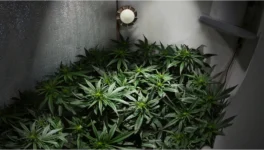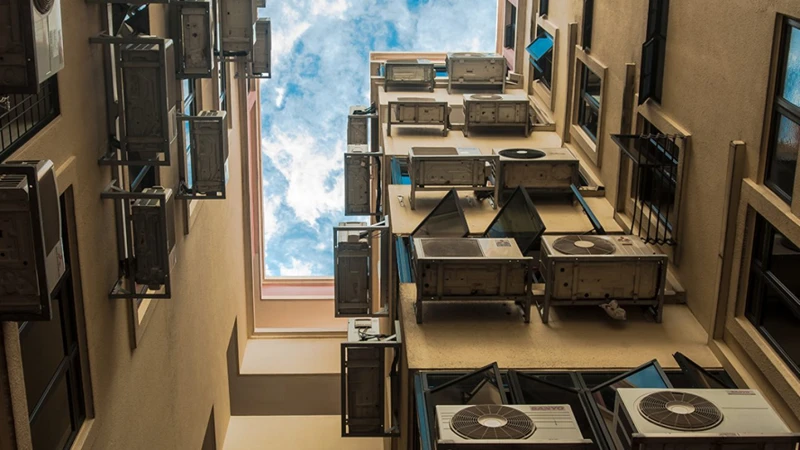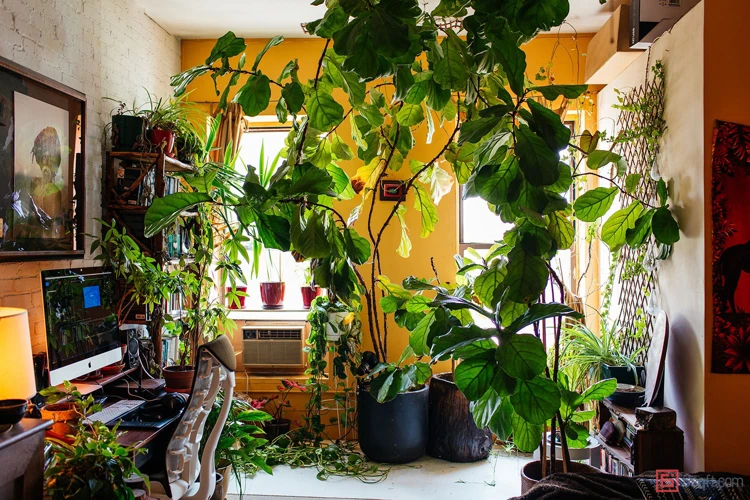
5 Tips to Keep Your Indoor Cannabis Grow Room Cool This Summer
As the summer months approach, indoor growers often find themselves struggling to keep their grow rooms cool. High temperatures can lead to wilted plants, reduced yields, and even plant death. The importance of maintaining a cool indoor grow room has never been more crucial, but the solution can be perplexing. With so many options out there, it can be difficult to know where to start. In this article, we will explore five effective ways to cool down your indoor grow room, ensuring optimal conditions for your plants to thrive. From air conditioning to heat-blocking window film, we’ve got you covered.
Why is it Important to Keep Your Indoor Grow Room Cool in Summer?
Contents
Maintaining an optimal indoor grow room temperature is crucial to the success of any indoor gardening operation, especially during the hot summer season. High temperatures can have a negative impact on plant growth and development, and can lead to a host of problems such as wilting, nutrient deficiency, mold growth and even plant death.
One of the main reasons why indoor grow rooms need to be kept cool during summer is to prevent heat stress in plants. Plants that are exposed to high temperatures for an extended period of time can become stressed and show signs of damage like yellowing and wilting leaves, stunted growth, and reduced yield. Heat stress can also make plants more susceptible to pests and diseases.
Another reason why it’s important to cool down an indoor grow room during summer is to maintain stable humidity levels. High temperatures can cause the air to become dry, which can lead to dehydration in plants. Low humidity levels can also make plants more prone to pests and diseases.
Furthermore, controlling the temperature of your grow room not only benefits your plants, it can also make the environment more comfortable for you as the grower. A hot and stuffy grow room can be uncomfortable to work in, causing fatigue and decreased productivity. A cool, well-ventilated room, on the other hand, can make the growing experience much more enjoyable and productive.
In conclusion, keeping your indoor grow room cool in summer is vital for the health and growth of your plants, as well as for your own comfort and productivity. With the right cooling equipment and strategies, you can maintain optimal temperature and humidity levels, protect your plants from heat stress, and ensure a successful indoor gardening season.
5 Effective Ways to Keep Your Indoor Grow Room Cool
As the summer months approach, indoor growers face a common challenge – how to maintain a cool and stable environment for their plants. Excessive heat levels can damage plants and even cause them to wilt, leading to stunted growth and reduced yields. However, with the right tools and techniques, it is possible to keep your indoor grow room cool and your plants healthy. Here are five effective ways to lower the temperature and maintain optimal growing conditions for your plants.
1. Air Conditioning
One of the most effective ways to cool down an indoor grow room in the summer is by installing an air conditioning unit. This can help regulate and maintain a consistent temperature, allowing your plants to thrive even in hot temperatures.
How does air conditioning work?
Air conditioning units work by extracting warm air from the room and reducing its temperature using a refrigerant. This refrigerant absorbs heat from the warm air, which is then expelled out of the unit through a series of coils and fans.
Types of air conditioning units
There are several types of air conditioning units available on the market, each with their own advantages and disadvantages. Here are some of the most common types:
| Type of Air Conditioning Unit | Description |
|---|---|
| Window Unit | A compact unit that is installed in a window, typically used for cooling smaller spaces. |
| Portable Unit | A self-contained unit on wheels that can be moved from room to room, typically used for cooling larger spaces. |
| Ductless Mini-Split System | A system that consists of an outdoor compressor unit and one or more indoor air-handling units, which are connected by a conduit. |
| Central Air | A system that uses ductwork to distribute cool air throughout the entire building. |
Factors to consider when choosing an air conditioning unit
When choosing an air conditioning unit for your indoor grow room, there are several factors to consider:
- Size of the room: It’s important to choose an air conditioning unit that is appropriately sized for your space. An undersized unit will struggle to keep up with the cooling demands of the room, while an oversized unit will waste energy and money.
- Energy efficiency: Look for units with a high SEER (Seasonal Energy Efficiency Ratio) rating to reduce energy consumption and save on utility bills.
- Noise level: Consider the noise level of the unit, especially if it will be located near living or sleeping areas.
- Maintenance: Some units require more maintenance than others, so be sure to research the maintenance requirements of your chosen unit.
Air conditioning is a highly effective way to cool down an indoor grow room in the summer. By choosing the right type of unit and considering important factors like room size, energy efficiency, noise level, and maintenance, you can create the optimal environment for your plants to thrive.
2. Fans and Ventilation
When it comes to cooling down your indoor grow room in summer, one of the most effective ways is utilizing fans and ventilation. Here are some methods to employ:
- Invest in oscillating fans: These types of fans can help circulate air around the room and create a more even temperature. Place them strategically in corners or areas where airflow may be limited.
- Create negative pressure: Set up exhaust fans near the top of your grow room, and intake fans near the bottom. This will create a “negative pressure” system where hot air is constantly being pulled out and cooler air is being brought in.
- Use carbon filter fans: These types of fans not only help with air circulation, but also remove any unwanted odors in the grow room.
- Install a duct system: Connecting your fans to a duct system can help move air outside or into other areas of your home. This can be especially helpful if your grow room is in a small space with limited ventilation.
- Monitor humidity levels: While fans and ventilation can help with temperature control, they also affect humidity levels. Make sure to monitor and maintain the right levels, as high humidity can lead to mold or mildew growth.
Utilizing fans and ventilation is a cost-effective way to keep your indoor grow room cool in the summer. By implementing these methods, you can create a consistent airflow that can help regulate temperature and maintain a healthy growing environment for your plants.
3. Cool Mist Humidifiers
One effective way to keep your indoor grow room cool during summer is by installing cool mist humidifiers. These devices work by releasing cool water vapor into the air, effectively reducing the temperature in the room.
Here are some benefits and considerations to keep in mind when using cool mist humidifiers:
| Benefits of cool mist humidifiers | Considerations when using cool mist humidifiers |
|---|---|
|
|
When using cool mist humidifiers, it’s important to place them away from your plants to prevent mist from settling on their leaves. It’s also important to monitor humidity levels using a hygrometer to ensure you’re not raising levels too high, which can lead to mold and mildew growth.
Cool mist humidifiers can be a great addition to your cooling system if used properly and maintained regularly.
4. Temperature-Adjusting Circulation Fans
Temperature-adjusting circulation fans are an effective way to keep your indoor grow room cool during the hot summer months. These fans work by detecting and adjusting the temperature in your grow room to maintain a constant, ideal temperature for your plants. With their automatic temperature control feature, these fans provide hassle-free cooling for your grow room without any manual intervention.
Here are some features and benefits of temperature-adjusting circulation fans:
| Features | Benefits |
|---|---|
| Automatic Temperature Control | Ensures that the temperature in your grow room is maintained at a constant, ideal level for your plants, without any manual intervention. |
| Energy Efficiency | Temperature-adjusting circulation fans consume less power compared to other cooling systems such as air conditioners, resulting in lower energy bills. |
| Quiet Operation | These fans operate quietly, so they won’t disturb the peace and quiet in your grow room. |
| Easy Installation | Temperature-adjusting circulation fans are easy to install and require minimal maintenance. |
Temperature-adjusting circulation fans are also available in different sizes and designs to suit the specific needs and requirements of your grow room. Investing in a high-quality model can provide you with hassle-free cooling and peace of mind knowing that your plants will thrive in a comfortable environment.
5. Heat-Blocking Window Film
Another effective way to cool down your indoor grow room during the summer is by using heat-blocking window film. Window films are thin and transparent sheets that can be applied to windows to reflect or absorb some of the sun’s heat before it enters the room. This is a cheaper alternative to replacing windows with energy-efficient ones, which can be costlier.
There are different types of window films available in the market, each with its own unique features and purposes. For instance, some are designed primarily for reducing heat and glare, while others serve as a privacy shield or security reinforcement.
The advantage of using window film is that they can be easily installed and removed, and they do not require any structural changes or permits for installation. Besides, they can also provide additional benefits such as lower energy bills, reduced fading of furniture, and improved insulation.
Below is a table that highlights some of the most popular types of window films, their features, and their functions:
| Type of Window Film | Features | Function |
|---|---|---|
| Sun Control Film | Reflective, tinted, or clear | Blocks heat and glare, reduces energy bills |
| Safety Film | Thick, shatter-resistant | Reinforces windows, prevents break-ins and accidents |
| Privacy Film | Frosted, textured, or decorative | Provides privacy and security, reduces visibility |
| Low-e Film | Highly reflective, metalized | Improves insulation, reduces UV rays and heat loss |
Keep in mind that window films have different levels of effectiveness and durability, depending on their quality, installation, and maintenance. You should choose the right type of film for your specific needs and preferences, and follow the manufacturer’s instructions for cleaning and care.
Using heat-blocking window film can be a simple but effective way to cool down your indoor grow room and reduce your energy costs during the hot summer months. By combining this method with other cooling strategies such as air conditioning, fans, and humidifiers, you can create a comfortable and optimal environment for your plants to thrive.
Tips to Maximize the Effectiveness of Your Cooling Systems
To make sure you get the most out of your cooling systems, there are a few tips you should keep in mind. First, set your temperature controls to the optimum temperature for your plants. This will vary depending on the specific plants you are growing, but generally falls between 70 and 85 degrees Fahrenheit. Be sure to monitor the temperature closely and adjust your controls as needed.
Next, ensure that your cooling systems are properly placed and directed. For example, if you are using an air conditioning unit, make sure it is positioned in a way that allows the cool air to reach all areas of your grow room. Similarly, if you are using fans or circulation fans, make sure they are directed towards the areas that need the most cooling.
Another important tip is to keep your grow room well-insulated. This means sealing off any gaps or cracks that might allow hot air to seep in, and making sure your walls and ceiling are properly insulated. This will help your cooling systems work more efficiently and prevent your grow room from becoming too hot.
It’s important to maintain a clean environment. Dust and debris can clog up your cooling systems and cause them to work less effectively. Regularly clean your air conditioning units, fans, and ventilation systems to keep them in good working condition.
Finally, consider using a dehumidifier in addition to your other cooling systems. High humidity levels can make your grow room feel even hotter, and can also promote the growth of mold and mildew. A dehumidifier will remove excess moisture from the air, making your cooling systems more effective and preventing these unwanted growths from taking hold.
By keeping these tips in mind and taking a proactive approach to cooling your indoor grow room, you can ensure that your plants stay healthy and happy even during the hottest months of the year.
Conclusion
In conclusion, it is of utmost importance to keep your indoor grow room cool during summer to ensure that your plants receive the necessary environment for healthy growth. With the variety of effective ways available to cool down your indoor grow room, such as air conditioning, fans and ventilation, cool mist humidifiers, temperature-adjusting circulation fans, and heat-blocking window film, there is no excuse not to take the necessary steps to maintain a cool environment.
However, it is important to remember that cooling down your indoor grow room is not a one-size-fits-all solution. You must consider the specific needs of your plants and the size of your grow room to determine the best cooling method to use. Additionally, it is crucial to regularly monitor the temperature and humidity levels to ensure that they remain in optimal ranges.
To maximize the effectiveness of your cooling systems, it is recommended that you maintain your equipment regularly and use temperature and humidity gauges to monitor the environment. You should also ensure proper airflow, avoid over-crowding your plants, and adjust your cooling systems as necessary.
In sum, keeping your indoor grow room cool in summer requires effort and consistent attention, but the rewards of healthy and thriving plants are worth it. With the proper care and attention, your plants will have an ideal environment to flourish and provide you with a bountiful harvest. So take the necessary steps to cool down your indoor grow room and enjoy the fruits of your labor.
Frequently Asked Questions
1. Can high temperatures in my indoor grow room harm my plants?
Yes, high temperatures can lead to reduced plant growth and yield, and can even kill plants if the temperatures get too high for too long.
2. How do I know if my grow room is too hot?
You can use a thermometer to check the temperature of your grow room. Most plants grow best at temperatures between 68 and 75 degrees Fahrenheit.
3. Do I need air conditioning to cool my indoor grow room?
Air conditioning is one of the most effective ways to cool a grow room, but there are other options such as fans and ventilation, cool mist humidifiers, and temperature-adjusting circulation fans.
4. How many fans do I need to cool my grow room?
The number of fans you need will depend on the size of your grow room and how much cooling you need. In general, 2-3 fans are enough for a small grow room, while larger rooms may require more.
5. Can I use regular household fans in my grow room?
Yes, regular household fans can be effective in cooling your grow room, but you may need to use multiple fans to get sufficient air flow.
6. Will a cool mist humidifier help cool my grow room?
Yes, a cool mist humidifier can help cool your grow room by increasing humidity, which can help lower temperatures.
7. How do temperature-adjusting circulation fans work?
Temperature-adjusting circulation fans work by sensing the temperature in the room and adjusting their speed to deliver the right amount of cooling air flow needed to maintain an ideal temperature.
8. Can window film really help cool my grow room?
Yes, window film can help block out heat from the sun, which can keep your grow room cooler. However, it may not be as effective as other cooling methods.
9. Can I use multiple cooling methods at the same time?
Yes, using multiple cooling methods together can be more effective than using just one. For example, you can use air conditioning and fans to create a more powerful cooling system.
10. How important is it to maintain the right temperature in my grow room?
Maintaining the right temperature is crucial for the health of your plants and the success of your grow. If temperatures are too high or too low, it can negatively impact plant growth and yield.




